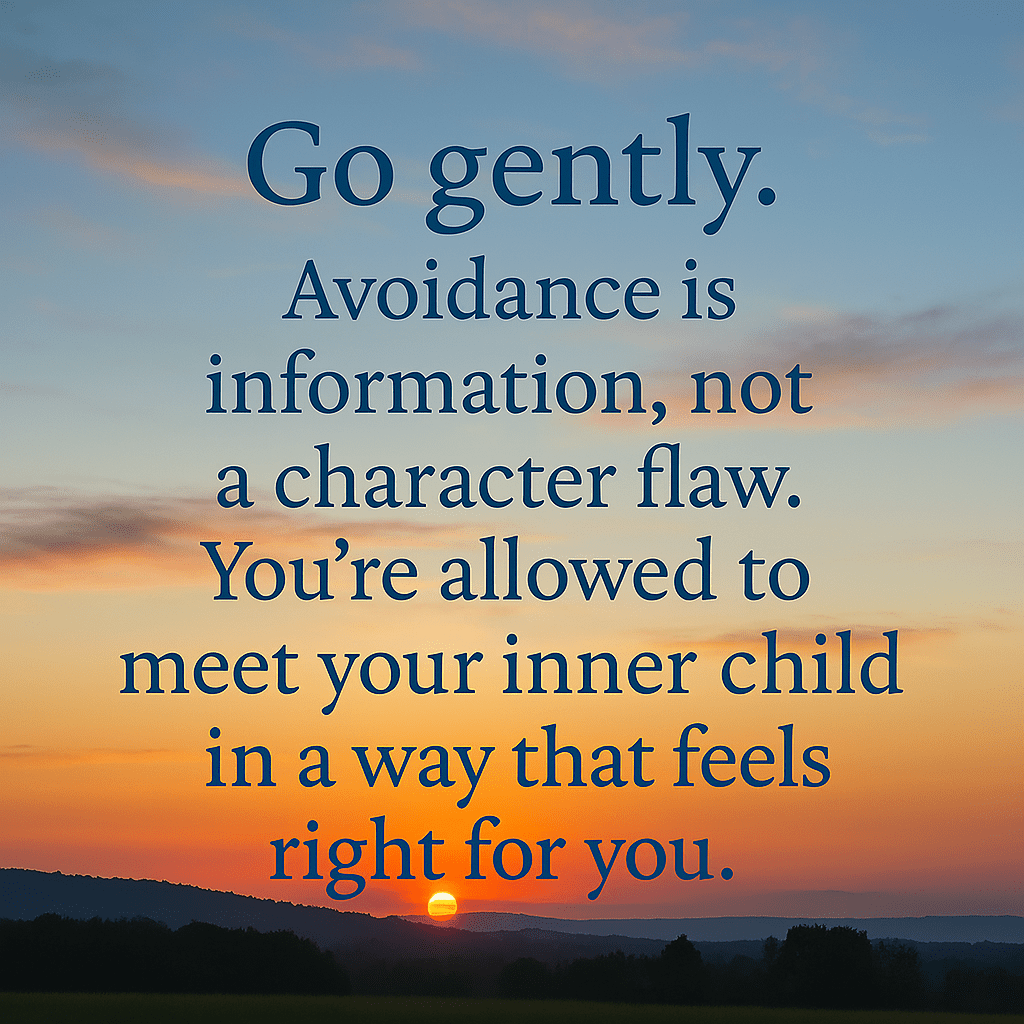 The Idiot’s Guide to Inner Child Work (For Those Who’d Rather Not)
The Idiot’s Guide to Inner Child Work (For Those Who’d Rather Not)
Let’s be honest: inner child work can sound a bit too fluffy, or way too intense. Maybe it conjures images of sobbing over old toys or writing tearful letters to your past self. If that makes you back away slowly with an awkward laugh… you’re in good company.
One brave member of our community described themselves as “a total brat” about avoiding the hard stuff. And honestly? That’s the perfect entry point.
Who Is the Inner Child?
Your inner child is the emotional blueprint of who you were growing up — especially during moments of fear, confusion, joy, or creativity. They’re not a ghost trapped in your psyche. They’re a part of you that still exists… often hidden beneath survival strategies or self-protection.
Inner child work means:
- Revisiting unmet needs or forgotten emotions
- Validating experiences you’ve pushed aside
- Reconnecting with joy, curiosity, and softness
Why We Avoid It
For survivors, vulnerability is risky business. Inner child work asks you to sit with tenderness, and that’s not always easy. You might:
- Feel silly even considering it
- Fear being flooded with old emotions
- Distrust the idea of “nurturing” anything inside you
- Assume you’re not capable of doing it “right”
But avoidance isn’t failure — it’s a signal from your system. And it deserves compassion too.
Starting Small: No Crayons Required
If you’re not ready to dive into the deep end, dip a toe in:
- Childhood Music: What songs did you love? Listening again can unlock memories without pressure.
- Memory Glimpses: Picture one safe moment from childhood. Or one that wasn’t. Let it surface — no analysis required.
- Gentle Letters: Write to your younger self. Or imagine them writing to you. It can be brief, awkward, or loving — whatever feels possible.
- Tone-Check: When you’re harsh with yourself, ask if you’d say that to a child. Then soften it.
Why It Matters
Inner child work isn’t mandatory. But it helps you:
- Relieve guilt, shame, or harsh self-talk
- Reclaim emotional parts lost to trauma
- Practice self-acceptance from the inside out
- Create a new relationship with your past, on your own terms
You don’t have to do it dramatically. You can start wherever you are.
Final Thoughts
If you’re allergic to vulnerability, welcome — you’re normal. Your avoidance may be protecting something incredibly tender. That doesn’t make you broken. It means you’re wise.
Go gently. Avoidance is information, not a character flaw. You’re allowed to meet your inner child in a way that feels safe and true for you.
At HAVOCA, we honour every survivor’s pace. Whether you’re eye-rolling through your first attempt or still circling the idea from a safe distance — you’re doing the work. And that’s enough.
Some resources
Help for Adult Victims Of Child Abuse – HAVOCA » Information for Survivors » Inner Child
📚 Recommended Reads
- Homecoming: Reclaiming and Championing Your Inner Child by John Bradshaw A foundational classic in the field, Bradshaw guides readers through developmental stages and offers exercises to reconnect with the wounded child within. It’s especially helpful for understanding how early experiences shape adult behavior.
- The Inner Child Workbook: What to Do with Your Past When It Just Won’t Go Away by Cathryn L. Taylor This practical guide uses a six-step formula to help readers identify, re-experience, and release childhood pain. It’s structured and accessible, making it ideal for survivors who want a clear roadmap for healing.
- Recovery of Your Inner Child by Lucia Capacchione A creative and experiential approach that encourages dialogue with your inner child through writing and drawing — often using your non-dominant hand. It’s gentle, intuitive, and especially useful for reconnecting with playfulness and intuition.



